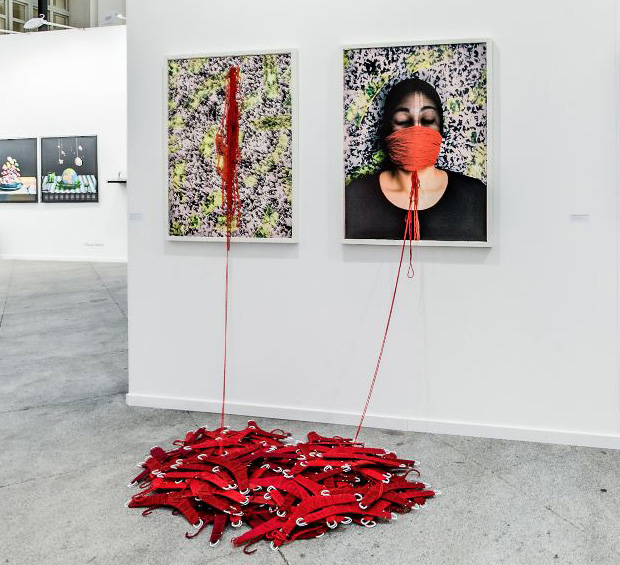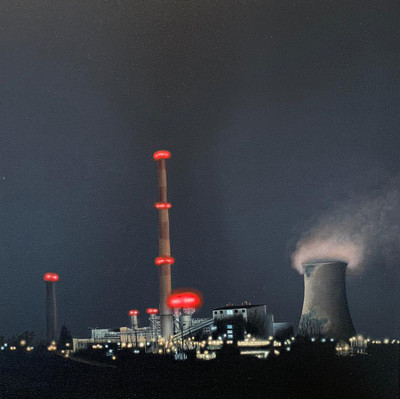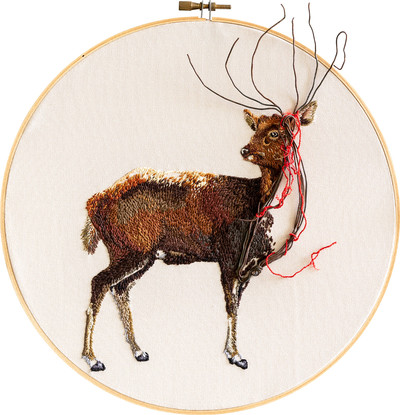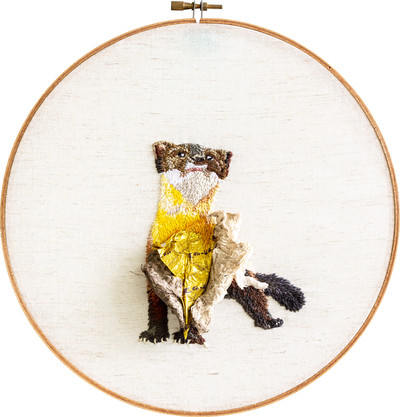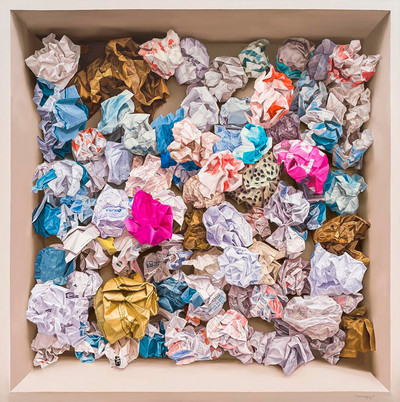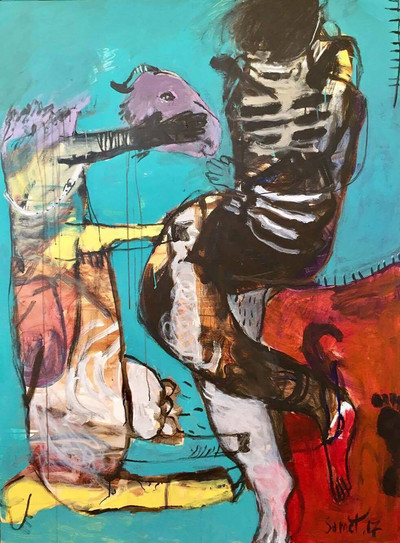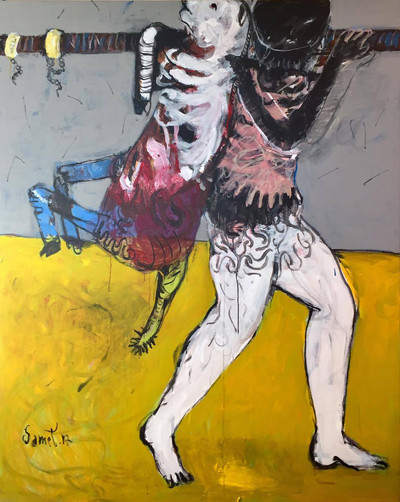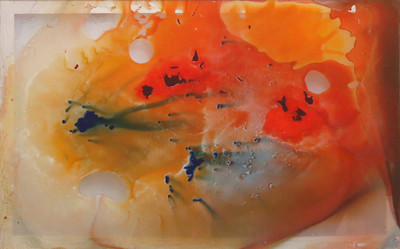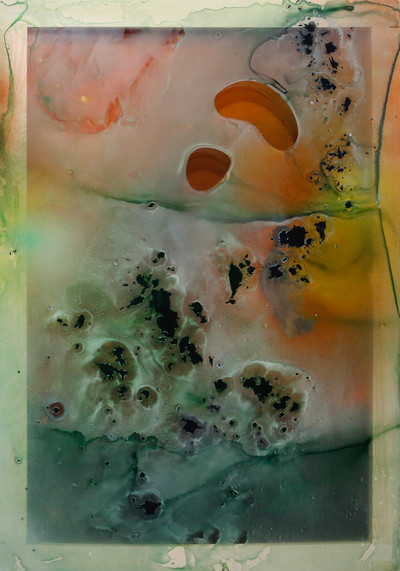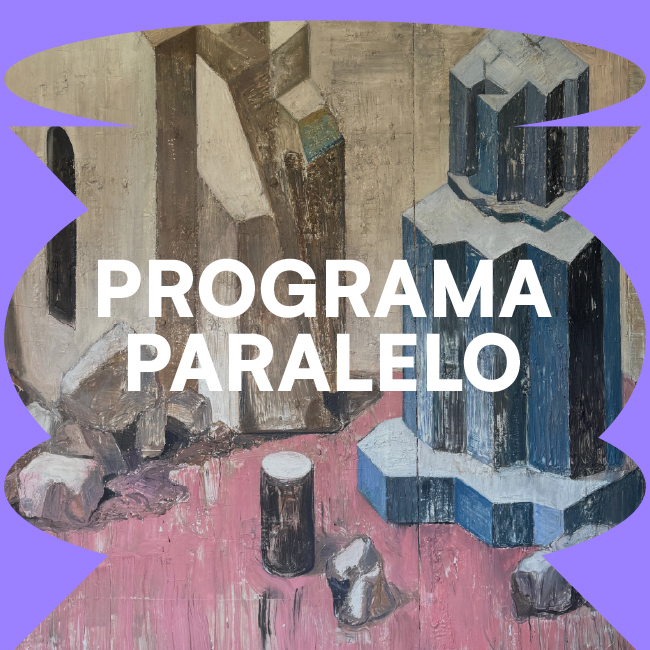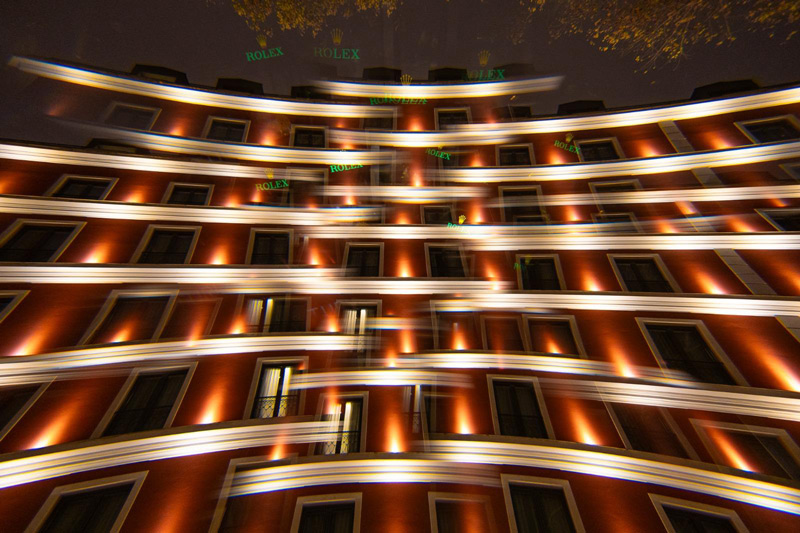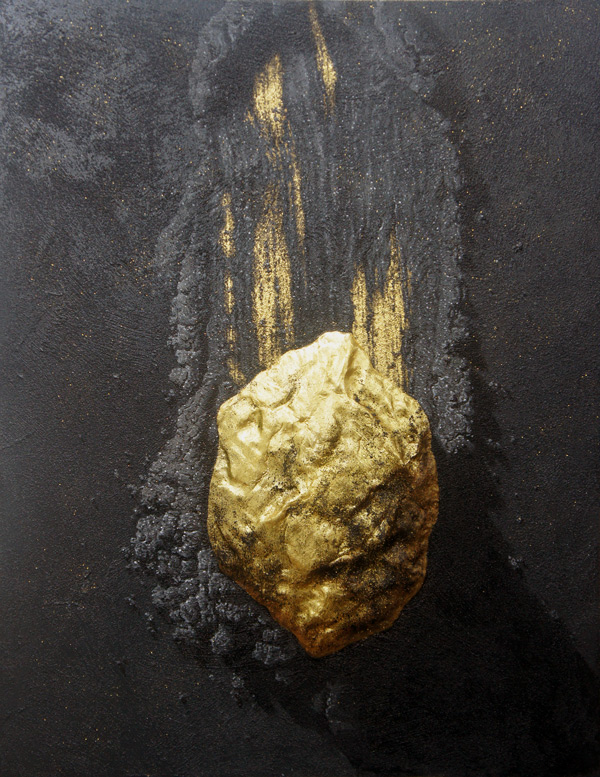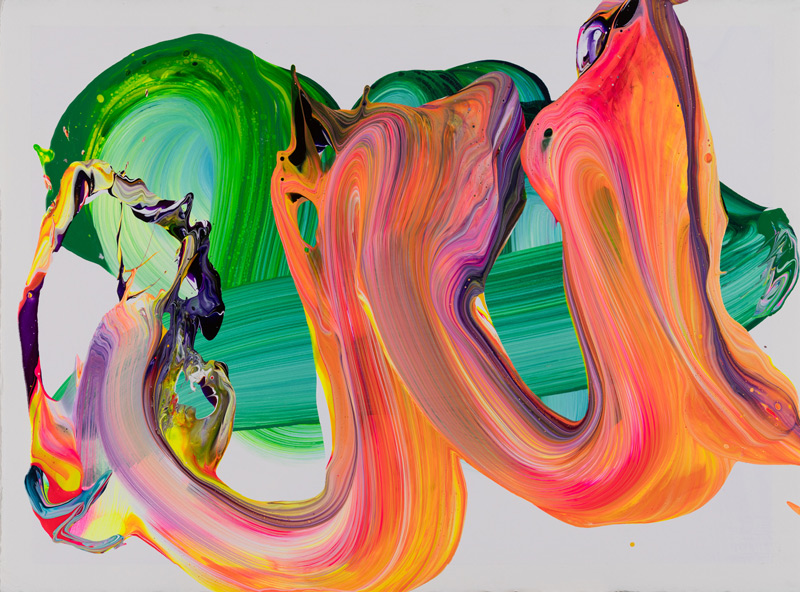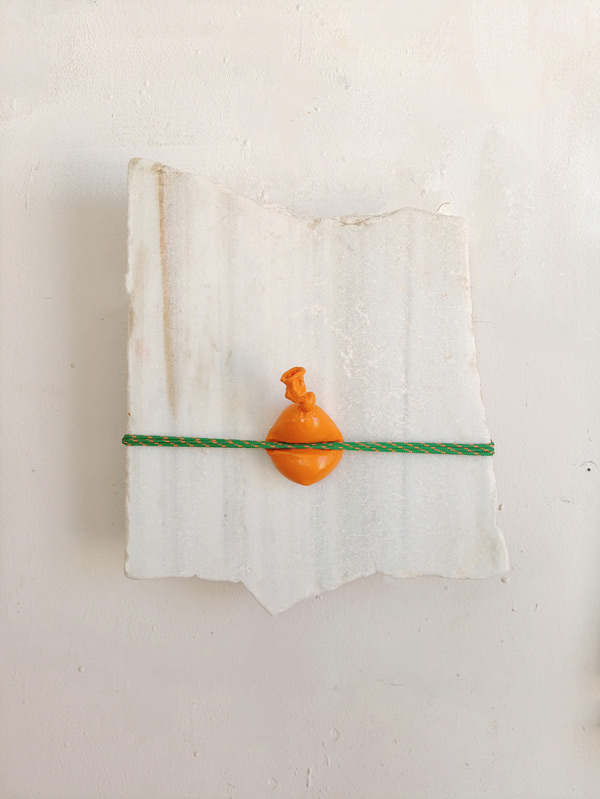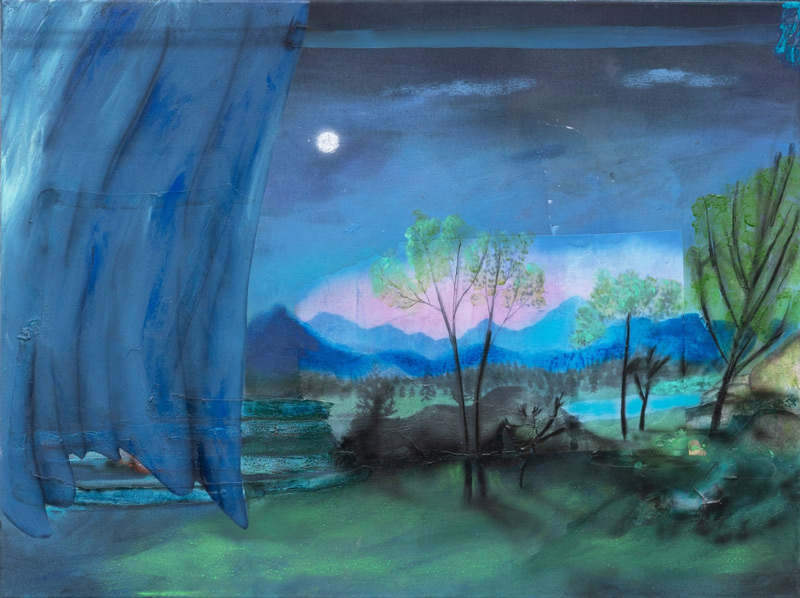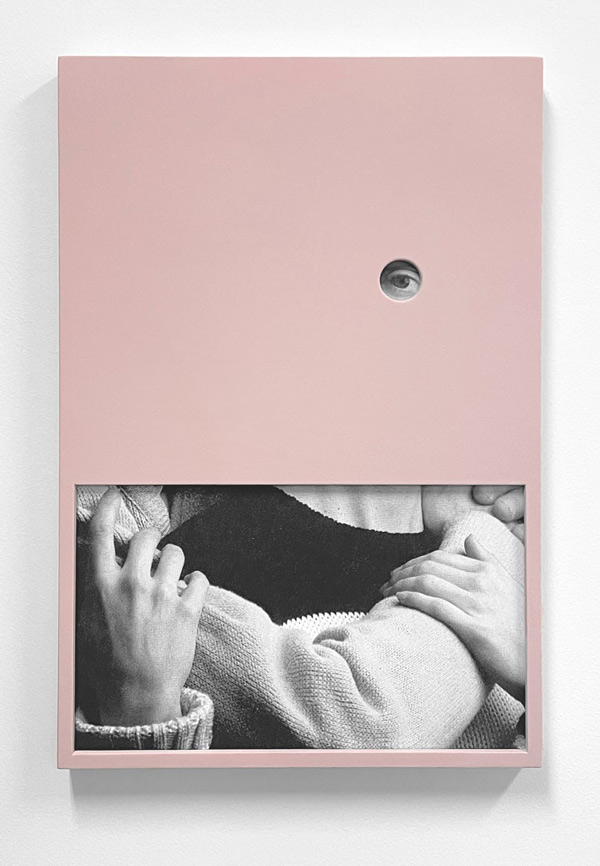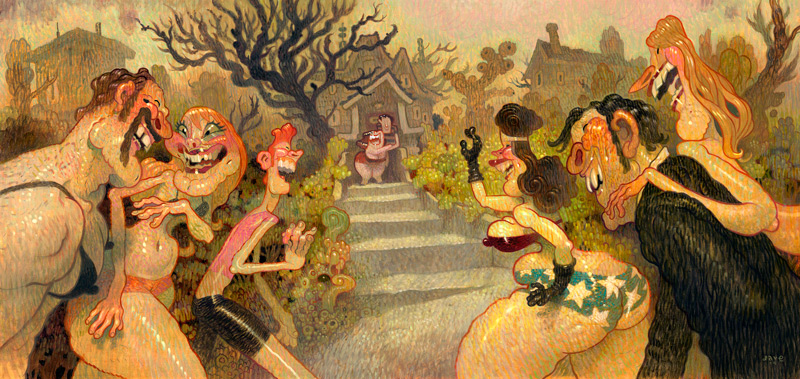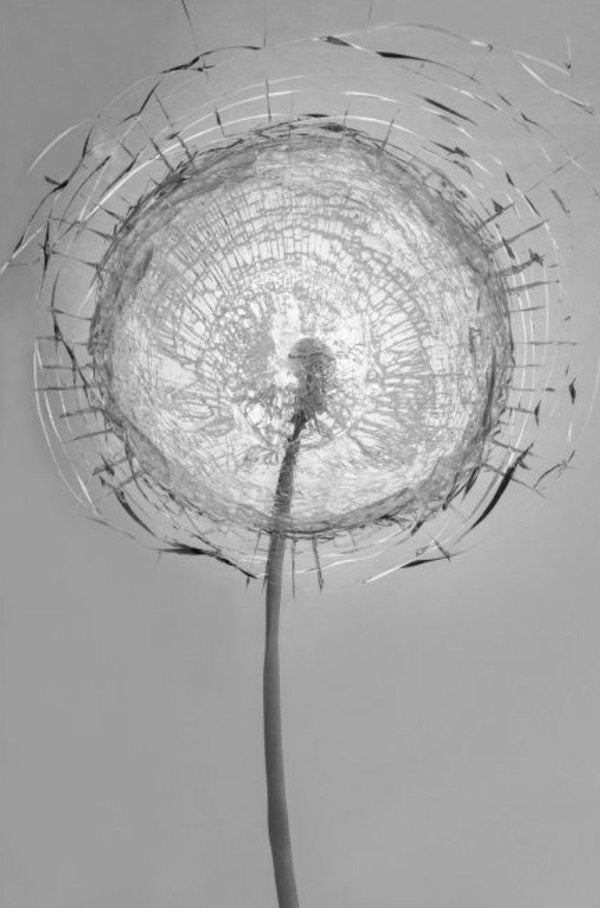The Parallel Program of the 21st edition of Art Madrid shapes a conceptual ecosystem where theory, artistic practice, and shared experience converge, transforming the exhibition space into a territory for critical reflection and symbolic production. This initiative establishes the fair as an ephemeral organism capable of hosting multiple layers of meaning, where every architectural element, every artwork, and every movement of the public takes part in the collective construction of sense.
The theoretical foundation of this edition rests on two complementary conceptual pillars: the attention to the infra-ordinary proposed by Georges Perec in Species of Spaces and Édouard Glissant’s Poetics of Relation . On the one hand, the reflection follows Perec’s invitation to pause and focus on what usually goes unnoticed: the everyday details that shape the deep texture of our experience. Applied to the context of an art fair, this fragmented gaze reveals every wall, corridor, and booth as a micro-space of meaning, a narrative unit within a constantly evolving choral story. The fair thus emerges as a temporary archive that only reaches its full potential through the interaction of those who inhabit it, transforming the ordinary into the extraordinary through the very act of attention.
Glissant, for his part, contributes an ethics of diversity and interdependence that is especially relevant in the contemporary context. His Poetics of Relation proposes that each element maintains its irreducible singularity without demanding complete understanding or reduction to known categories, while at the same time being transformed through its relations with others. This relational conception underpins the curatorial structure of the program, fostering encounters, frictions, and dialogues that expand our understanding of contemporary art as a shared, non-linear experience. The fair ceases to be a homogeneous whole and becomes instead a space of coexistence, where the opacity of the other is respected and valued as a condition for the possibility of genuine encounter.
The articulating concept of “imaginary distances” synthesizes both theoretical frameworks, referring not only to physical distance but also to intervals of attention, subjective paths, and affective micro-cartographies that visitors trace as they move through the space. These invisible distances, absent from architectural plans, form an emotional and sensory cartography that the fair constantly records and reconfigures. Each visitor generates their own map, their own narrative, their particular way of temporarily inhabiting this species of space.
From this perspective, the fair is understood as a surface of multiple inscriptions, where each edition leaves traces, erasures, and new marks. Every fragment, every gesture, every passage creates a layer of memory that turns experience into an act of relation and knowledge. To inhabit the fair, then, is to learn to look at what seems evident, to recognize in the minimal the possibility of the extraordinary, and to accept that every cultural experience is simultaneously archive and relation. The viewer thus adopts an active stance, transforming contemplation into an act of questioning and cohabitation, where artwork and public coexist within the same poetics of attention.
The Art Madrid’26 Parallel Program unfolds through a series of initiatives that will take place both prior to the fair and during the event itself, from March 4 to 8 at its venue in the Galería de Cristal of the Palacio de Cibeles:
Interview Program.
Conversations with Adonay Bermúdez: dialogue as curatorial practice
The curated interview program returns for its fifth consecutive edition, reaffirming itself as one of the defining features of Art Madrid’s Parallel Program. This year, independent curator and art critic Adonay Bermúdez (Lanzarote, Spain, 1985) takes on the direction of the program, bringing his extensive international experience and his sensitivity toward contemporary artistic practices from Ibero-America.
Conversations with Adonay Bermúdez opens a space to delve deeper into the experiences and creative processes of the artists, highlighting the diversity of perspectives that shape the contemporary landscape. Through dialogue, the motivations, concerns, and dynamics that inform each creator’s work are explored, emphasizing the importance of meeting points such as galleries and art fairs in the dissemination and understanding of current art. This initiative reinforces Art Madrid’s commitment to contemporary creation, offering the public a direct and human way to engage with some of the voices that shape the exhibition proposal of this edition.
The participating artists represent a wide spectrum of practices, languages, and sensibilities within contemporary art. They include: Carmen Baena, represented by Galería BAT alberto cornejo; Sergio Rocafort, represented by Shiras Galería; Chamo San, represented by Inéditad Gallery; Cedric Le Corf, represented by Loo & Lou Gallery; Daniel Bum, represented by CLC ARTE; Iyán Castaño, represented by Galería Arancha Osoro; Julian Manzelli (Chu), represented by g•gallery; and the duo DIMASLA (Diana + Álvaro), represented by Galería La Mercería. Each proposal offers a singular perspective on materials, formats, and concepts, creating a polyphony of voices that enriches the audience’s experience and invites them to explore new ways of approaching the creative universes of those who shape the fair.
Open Booth: A space for emerging creation
The third edition of the Open Booth reaffirms Art Madrid’s commitment to emerging creation, allocating a physical space of twenty-two square meters to be intervened by an artist at the beginning of their professional career. On this occasion, the invited artist is Daniel Barrio (Cienfuegos, Cuba, 1988), who will develop a site-specific project titled “Despiece”.
The Open Booth project functions as a platform for visibility and experimentation, allowing emerging artists to engage on equal terms with participating galleries. This space is conceived as an exhibition platform where ideas can materialize without the usual market constraints, encouraging risk-taking proposals and works-in-progress. In this way, the initiative exemplifies Art Madrid’s commitment to supporting new voices, recognizing that the contemporary art ecosystem requires transitional spaces where artists can professionalize and gain visibility among collectors, institutions, and other agents in the field. The Open Booth thus fits within the relational logic that underpins the entire fair program, understood as a territory of possible encounters where the emerging and the established coexist and mutually enrich one another.
Daniel Barrio’s proposal is a site-specific project that puts history, urban memory, and the materiality of space into tension. The work unfolds as a reconstructed archive, where each element—from the iconic Belvedere torso to the wax table and pigmented canvases—articulates a dialogue between the classical and the contemporary, the sacred and the everyday. In this work, the artist explores the fragility of materials, the viewer’s perception, and the sensory experience: through handmade pigments, mortar, lime, and wax—elements that activate the viewer’s corporeality, placing them in a state of vulnerability and heightened attention. The canvases, intervened upon printed supports featuring fragments of the city, function as a poetic record of culture and consumption transformed into ruin, evoking a space that is simultaneously interior and exterior.
Nebrija Space: NotanIA SipedagogIE
Universidad Nebrija and Art Madrid join forces for the second time to present a curatorial project resulting from the work of students in the Fine Arts degree program. Nebrija Space has been conceived to support visual artists in training during their first incursion into Madrid’s contemporary art circuit. Sponsored by Liquitex, a global reference brand in professional acrylics, this initiative represents a unique opportunity for emerging artists to integrate into and actively participate in an event of national and international relevance.
The curatorial proposal is articulated under the title "NotanIA SipedagogIE", a neologism that condenses a critical reflection on the relationship between art pedagogy, the market, and technology. In contrast to the algorithmic logic of Artificial Intelligence, this project proposes the notion of Aesthetic Intelligence: a form of knowledge that integrates the sensory, the affective, the intuitive, and the cultural. It thus advances a critical and empathetic pedagogy that opposes the automation of creative thinking and promotes a situated yet nomadic aesthetic experience.
The methodology is based on the poetic appropriation of verses as a starting point for the creation of untitled works, accompanied by a mood board that documents the sensitive process. The booth is conceived as a choral and transitory work, inspired by Madrid’s SER zones, where art becomes a space of symbolic transit, resistance, and reflection on being, desire, the presence of the other, and the temporary occupation of artistic space. This proposal directly connects with the fair’s theoretical foundations, understanding the exhibition space as a site of constant negotiation between the individual and the collective.
Performance Cycle. Open Infinite: What the Body Remembers
The Performance Cycle presents its fourth edition under the title "Open Infinite: What the Body Remembers", an initiative aimed at strengthening the presence of women artists within the Parallel Program. This open call is directed at creators whose performative work explores the tensions between body, memory, space, and time, transforming the fair into a welcoming space for ephemeral, fragmentary, and relational experiences that expand the viewer’s perceptual and symbolic boundaries.
The project is grounded in Erving Goffman’s theory of everyday life as a stage of modulated performances, proposing that the artists’ bodies function as performative “fronts” that shape the framework of interpretation for the public. The performances dramatize the everyday, exposing tensions between the visible and the hidden, the idealized and the effort required, while articulating strategies of presence that reveal or conceal power, vulnerability, and intimacy.
Building on these notions, the cycle broadens its scope toward posthuman, decolonial, queer, ritual, and ecological perspectives, conceiving performance as an act capable of making visible the invisible connections and tensions that traverse bodies, objects, and contexts. The invited artists are Jimena Tercero (Madrid, 1998), Amanda Gatti (Porto Alegre, Brazil, 1996), La Burra Negra Collective (made up of: Sara Gema, Sasha Falcke, Ascen Soto, Gaby Feldman, Regina Carolina, and Sofía Barco), and Rocío Valdivieso (Tucumán, Argentina, 1994)., whose proposals will transform the fair into a space of welcome for ephemeral and relational experiences that expand the viewer’s perceptual and symbolic limits.
"Open Infinite…" frames the body as a site of constant negotiation between the individual and the collective, where ephemerality acquires symbolic density and the fragility of identity and the power of encounter with others are simultaneously manifested. The series proposes an inquiry into the connections between body, memory, space, and time, understanding performance as a practice that activates critical and sensitive readings of the symbolic layers that constitute us. In this sense, the body is revealed as a living archive, a territory where the marks of personal and collective history are inscribed, and where belongings and resistances are negotiated.
Lecturas: Curated Walkthroughs
The project Lecturas: Curated Walkthroughs is a cultural mediation activity designed to bring visiting audiences closer to the works exhibited in the General Galleries Program. Art historians and cultural communicators Marisol Salanova and Zuriñe Lafón invite us to discover new perspectives on contemporary art through itineraries designed to guide us through the exhibition proposals of the edition.
These thematic walkthroughsfunction as opening devices, as tools that facilitate understanding without imposing closed readings. The curators will trace four itineraries that reveal unexpected dialogues between works from different galleries, offering interpretive keys that enrich the gaze without exhausting it.
This initiative is part of the conception of the fair as a space for collective learning, fostering access to contemporary art and creating the conditions for a broad and diverse audience to fully enjoy the experience. At the same time, the walkthroughs materialize the “imaginary distances” that conceptually articulate the edition, demonstrating that each curatorial discourse constructs a particular narrative, a specific way of inhabiting the exhibition space.
La Quedada. Studio visit to Daniel Barrio. Guest artist at the Art Madrid’26 Open Booth
As a prelude to the fair days, Art Madrid’26 organizes several activities designed to bring the public closer to the creative process and to the participating artists. One of these is a studio visit to Daniel Barrio, invited artist for the Open Booth project. This activity will offer first-hand insight into the context, methodology, and research behind his work, providing an intimate and direct experience that enriches the relationship between the public and contemporary creation. Attendees will have the opportunity to enjoy this visit as a preview, prior to the artist’s participation in the fair.
“Despiece” is Daniel Barrio’s proposal for the Open Booth at Art Madrid’26. The work functions as a reconstructed archive, where each element—from the iconic Belvedere Torso to the wax table and pigmented canvases—articulates a dialogue between tradition and contemporaneity, history and the present.
Daniel Barrio (Cienfuegos, Cuba, 1988) has lived and worked in Madrid since 2014. Trained in painting at the Academy of Visual Arts in Cienfuegos and in Art Direction at the Madrid School of Cinematography, he develops a practice in which image and space are conceived as constructs of meaning. His work employs proprietary techniques reminiscent of fresco, using handmade pigments and supports, linking each piece to the time and environment in which it is created. He explores urban memory, migration, and the construction of identity through what has been abandoned, re-signifying press and media images as a way of resisting commodification and contemporary surveillance. His practice is a slow, reflective gesture—an act of preservation and dialogue with the ephemeral and the intimate.
The Parallel Program of Art Madrid’26 is an extensive initiative within a fair model that understands contemporary art as a shared experience where multiple agents, perspectives, and temporalities converge. From curated interviews to the performance series, from the Open Booth to the Nebrija Space, each initiative contributes to creating an experience in which the audience becomes an active participant in a temporary community. The fair thus reveals itself as a living organism, another kind of space in constant reconfiguration.
Art Madrid, aware of its cultural responsibility beyond its commercial dimension, seeks to generate spaces for reflection, learning, and encounter without renouncing the art market. The challenge lies in maintaining a delicate balance between the ephemeral nature of the fair and the density of the aesthetic experience, consolidating a context in which art is perceived as an object of appreciation, debate, and knowledge.
